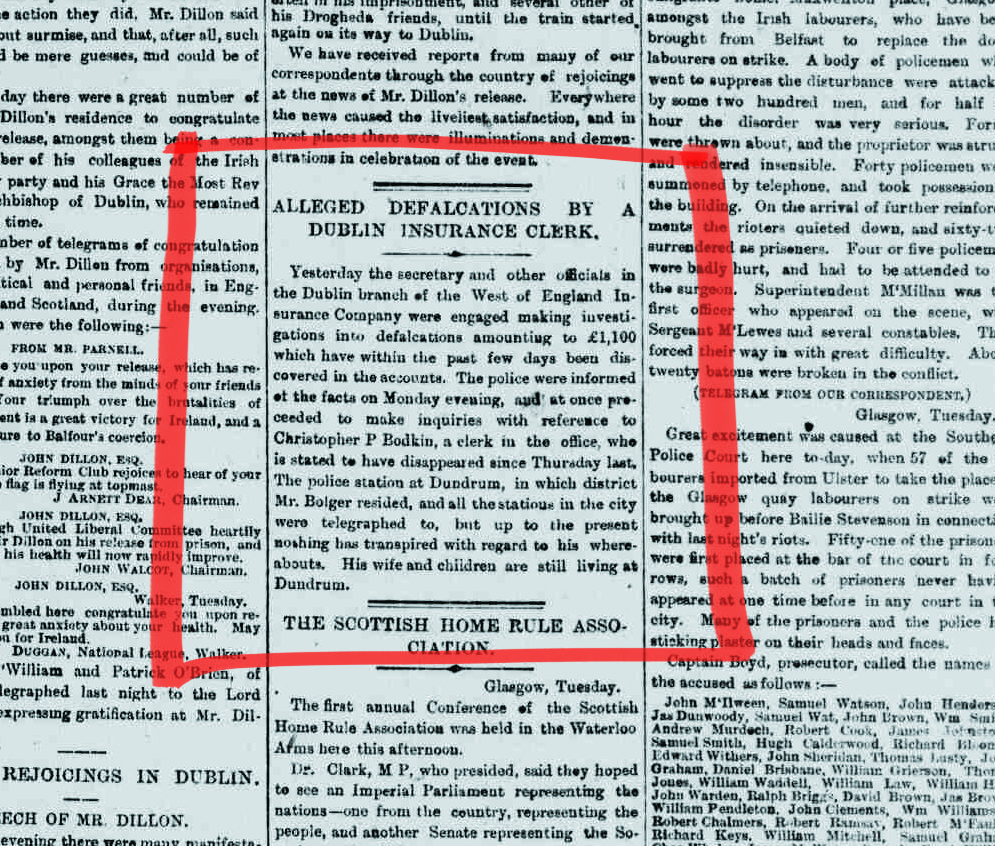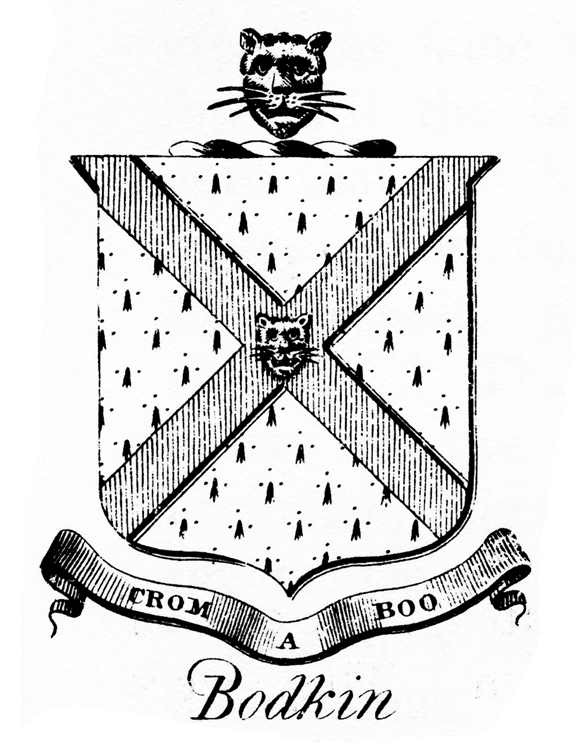Christopher Peter Bodkin (1845-1905), (C.P., for short) did not arrive in NY with his wife and 6 children in 1892. His wife and kids travelled comfortably – second class aboard the steamship Anchor. They crossed in 10 days – fast for the late 1880s. Census and naturalization documents give a September of 1888 arrival date for him and his oldest son, Thomas. I’ve found no ship’s manifest documenting their crossing.
In September 1888 C.P was 43 his wife Deborah was 40. There were 8 surviving children. Mary was 20, Deborah “Birdie” was 17, Helen was 16, Thomas was 14, Christopher was 9, Imelda was 8, John was 7 and Alphonsus age 2. Deborah was 3 months pregnant with, presumably, their last child. Plus, there was an irish terrier.
So, why did he decide to come here, and where’s the manifest of C.P’s crossing? Lost to history?
Then, I found this in the Irish Times of 9/19/1888, the Northampton Mercury of 9/22/1888 and the below, the most detailed account from the Freeman’s Journal 9/19/1888. No follow up stories have been found.

“Alleged Defalcations by a Dublin Insurance Clerk
Yesterday the secretary and other officials in Dublin branch of the West of England Insurance Company were engaged in making investigations into defalcations amounting to £1,100 which have within the past few days been discovered in the accounts. The police were informed of the facts on Monday evening and at once proceeded to make inquiries with reference to Christopher P. Bodkin, a clerk in the office who is stated to have disappeared since Thursday last. The police station at Dundrum, in which district Mr. Bolger* resided, and all the stations in the city were telegraphed to, but up to the present nothing has transpired with regards to his whereabouts. His wife and children are still living in Dundrum.”
The address listed in the newspapers matches his children’s birth records and Thom’s Irish Almanac – a city street directory.
The occupation given in the news matches that reported in other American documents including the 1900 census and his death certificate.
The West of England Insurance Company has been purchased and merged over the years and still exists, as such, as Aviva. According to the group archivist:
“An insurance clerk in a branch in that period would have been employed at the counter dealing with customers who came in wanting to take out insurance or make claims and in writing up all the policy details in the ledgers. Any records from that time were destroyed in the Exeter Blitz along with the company’s former head office.”
Money crossed his desk. There was opportunity.
Further,
“branch staff in this era would typically have earned between £45 7s and 5s a week- depending on experience. The Dublin office of General Accident at around this date had a manager on £200pa and 2 clerks, one on £45 7s (who happened to be the manger’s son) and one on 5s per week who had recently been taken on as a sort of apprentice/ dogsbody. The clerk in the Belfast office (another son of the Dublin Manager) – was on £35 10s pa. “
According to the The Clerical Officer of the Garda Museum, Dublin Castle,
“…it appears that most, if not all, of such information prior to 1922 was destroyed when that police force (the Royal Irish Constabulary) was disbanded. The British Home Office was given the task of deciding which files were to be brought back to England and which were not. Those that were deemed to be unnecessary were destroyed. The information you have already sourced from newspaper archives is probaly the only record of what happened at that time.”
With no further info on the outcome, and as circumstantial as the evidence is, it seems clear this incident provided C.P. with reason to emigrate to NY in 1888.



